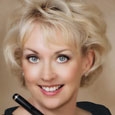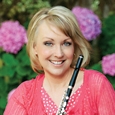Musicians experience significant exposure to loud sounds on a daily basis, yet our sense of hearing is the faculty we use the most to perceive our craft. It is practically a given that musicians will experience some degree of instrument related hearing loss over the course of a professional career because of the prolonged periods of exposure.
Using hearing protection, such as earplugs specifically created for musicians, can minimize the damage. The best earplugs for our use offer reduced levels of damaging sound as well as the most accurate tonal perception possible. Most people do not need much hearing protection (15 dB) to dramatically reduce the risk of significant hearing impairment over time. (Editor’s Note: Sound pressure is measured in decibels or dBs. The scale ranges from below 0, the sound of rustling leaves, to over 140, the sound of a gunshot or loud clap of thunder. A symphony orchestra comes in around 100dBs.)
In addition to hearing loss there are other secondary effects that may occur, such as tinnitus or ringing sounds that interfere with sound perception. Loss typically seen in flute and piccolo players occurs in the 3-4 kHz range, which may eventually affect the correct perception of sibilant speech sounds s, sh, and ch, according to audiologist Michelle Wilson. An audiometric test can reveal such problems.
Damage for flutists can be more severe on the right side because the flute is closest to that ear, although in some cases the left may be more affected due to the proximity of other orchestral instruments. Piccolo players have an increased risk because they play at a pitch level in which the damage occurs the fastest.
The world’s first high fidelity hearing protector was patented by the late Elmer Carlson, whose design replicated the natural sound of an open ear. In the 1980s custom fitted earplugs were developed by several companies especially for musicians.
The custom fitted earplugs have two parts: an attenuator button and a deeply-fitted earmold that seals the ear canal. The attenuator buttons can be interchanged: there are filters at different strengths that can be used in different circumstances. I use greater attenuation strength when I practice piccolo. In performance, I want to experience more of the sound interplay between instruments, so I opt for less attenuation or sometimes none at all. However, if I am sitting near amplification during a pops concert, I use the stronger level because the volume of sound is greater. You will need to visit an audiologist’s office to be fitted for the custom earplugs.
You may want to experiment with earplugs of different attenuation in each ear, or wearing protection in just one ear. However, conventional earplugs (not specific for musicians) can cause problems: According to Patty Niquette, MA, in The Hearing Review, they can include too much high frequency attenuation, too much attenuation overall, or too much occlusion.
High frequency attenuation tends to block out the high frequency harmonics which are vital to the perception of loudness and overall tonal depth. Players sometimes overcompensate by playing louder than necessary to make up for the blocked harmonics.
Excessive overall attenuation also leads to overplaying. The occlusion effect is the increase in sound pressure at the eardrum behind the hearing protector itself that can lead to an increased risk of sound overexposure. This is more pronounced in wind players because sounds are also transmitted to the ear through bone conduction via the jaw bone, which connects to the bone surrounding the inner portion of the ear canal.
Potential hearing damage is something that all musicians should be aware of. The most sensible approach to hearing protection is to use earplugs specifically made for musicians, and to realize that hearing damage can develop without any symptoms over the years.
There are many useful sites online including www.larrykrantz.com/flutesor.htm. It has a terrific article written by Steven A. Wickes about flute/piccolo specific hearing loss concerns. I am very grateful for the knowledge of Michelle Wilson, PhD., who has fitted me for the custom musicians earplugs and provided advice for writing this article. Some additional material may be found at www.flutetalkmagazine.com.






